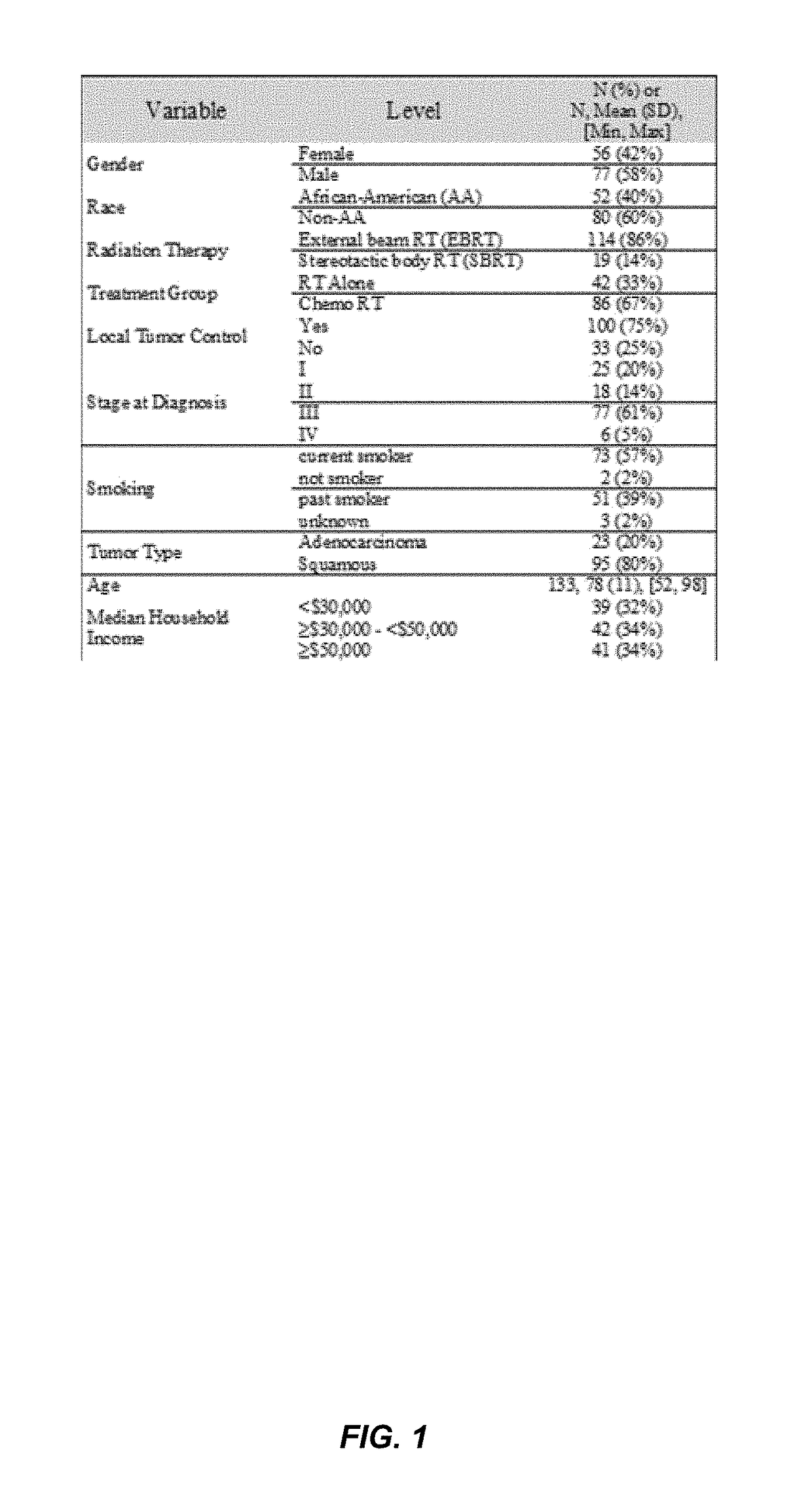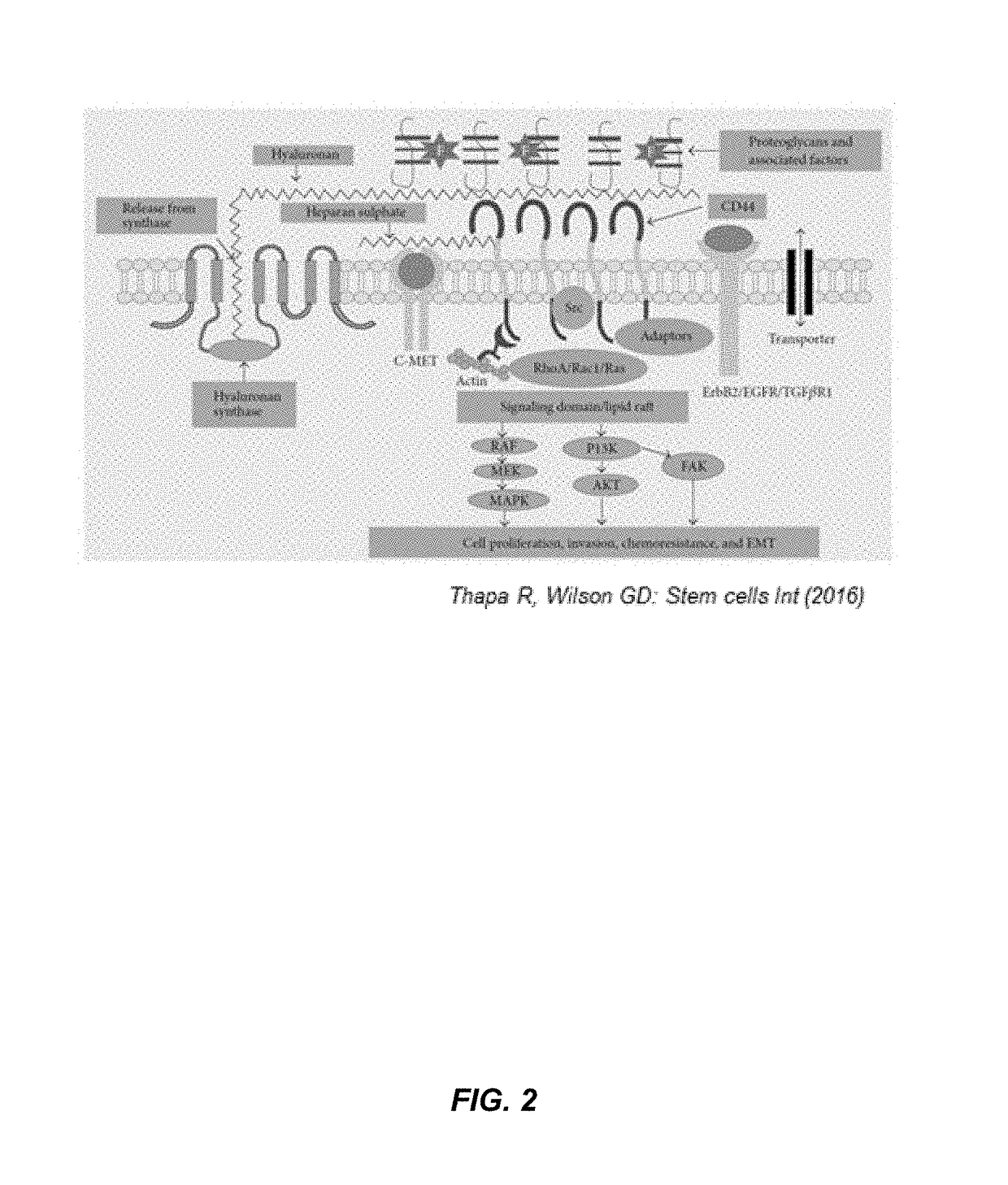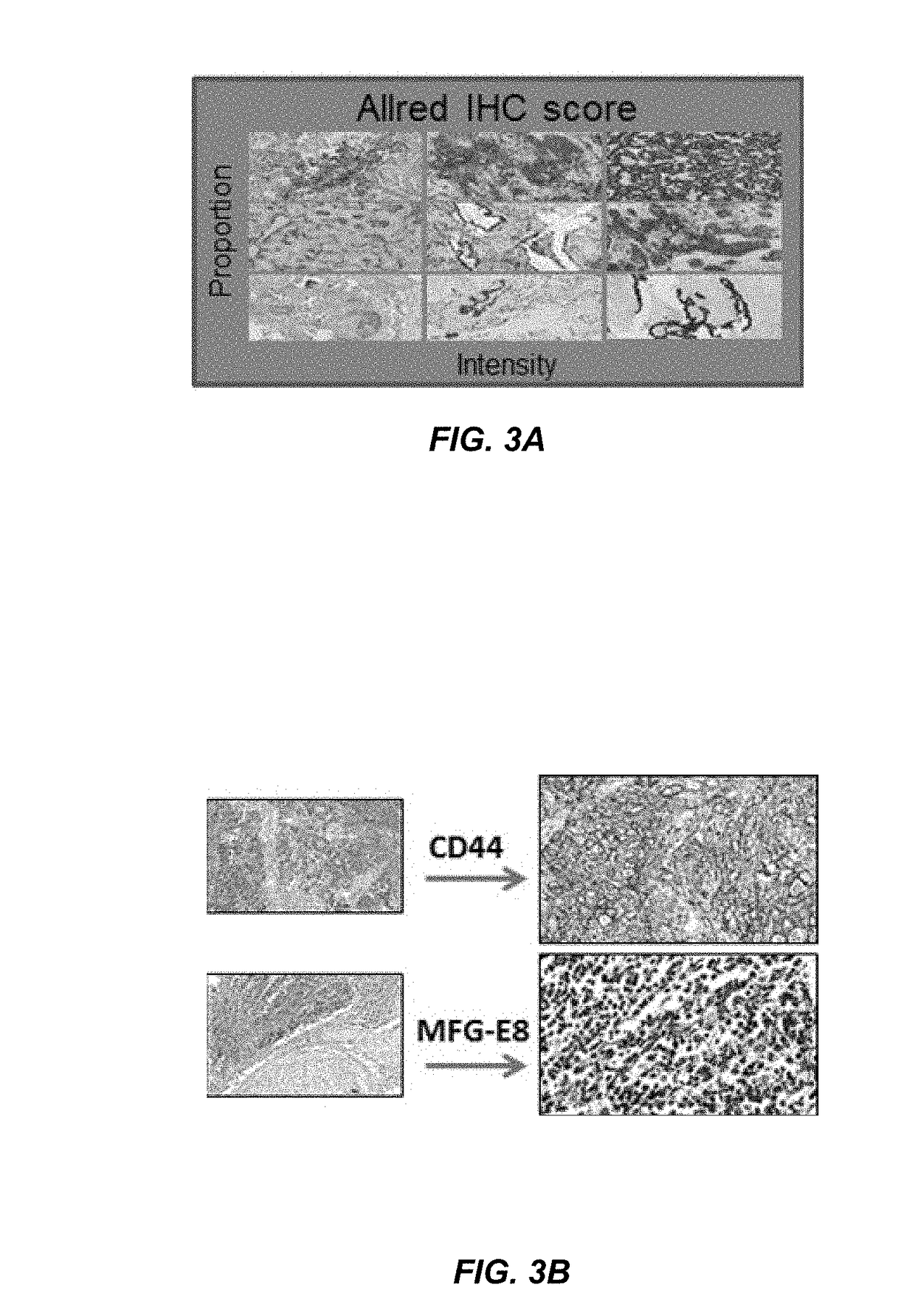Immune modulators in combination with radiation treatment
a technology of immunomodulator and radiation treatment, which is applied in the direction of antibody medical ingredients, instruments, peptides/protein ingredients, etc., can solve the problems of limiting the therapeutic effect of radiotherapy to treat cancer, affecting the therapeutic window of radiation therapy as a treatment paradigm, and the potential for normal tissue toxicity, so as to improve the efficacy of radiation therapy and improve the prognosis
- Summary
- Abstract
- Description
- Claims
- Application Information
AI Technical Summary
Benefits of technology
Problems solved by technology
Method used
Image
Examples
example 1
Identifying and Using Biomarkers to Predict Response to Radiotherapy
[0110]A radiosensitivity index based on the expression level of one or more molecular biomarkers can be used to predict a cancer patient's sensitivity to radiation. Genomic biomarkers and other indicators of the tumor microenvironment can also be used to predict a patient's response to radiotherapy. Additionally, molecular-target based biomarkers such as CD44 and TGFβ may be predictive of tumor response.
[0111]It has been shown that CD44 levels can predict local tumor recurrence after radiotherapy in patients with non-small cell lung cancer (NSCLC). In the study, 133 patients were treated with stereotactic body radiation therapy (SBRT) (12 Gy×4) or conventional fractionated radiation (60 to 70 Gy) (FIG. 1) (see Kumar, S., et al., “Prognostic Biomarkers in Non-Small Cell Lung Cancer Patients Treated With Radiation Therapy: Locally Advanced Non-Small Cell Lung Cancer,” International Journal of Radiation Oncology*Biolog...
example 2
Combination Treatment Comprising an Immune Modulator and Radiation can Enhance Inhibition of Tumor Growth Compared to Monotherapy
[0117]In this study female B57 / BL6 mice (n=5) were transplanted with MC38 colon carcinoma tumor pieces (2×2 mm). The tumors were exposed to gamma radiation (2 Gy) at day 8 post-transplantation. The mice were also admininistered an immune modulator, such as an anti-TIM4 antibody, an anti-MFG-E8 antibody, and an anti-M199 antibody at day 9 and day 11 post-transplantation. 2 mg / kg antibody was injected into each mouse. Tumor volumes were measured along three orthogonal axes (x, y, z) and tumor volume was calculated.
[0118]FIG. 6 shows that combination therapy of radiation and an anti-TIM4 antibody resulted in lower tumor growth compared to radiation therapy alone or anti-TIM4 antibody alone. In addition, combination therapy of radiation and an anti-M199 antibody also shows decreased tumor growth compared to anti-M199 antibody monotherapy. Similarly, anti-MFG-E...
example 3
TIM-4 and MFGE-8 Protein Expression Levels in Human Tumor Samples
[0120]Material and methods: Formalin-fixed, paraffin-embedded tissue sections were de-paraffinized prior to staining with antibodies targeting either TIM-4 or MFGE-8. The staining was performed using two antigen retrieval methods: TIM-4—Target Retrieval Solution (Dako), Citrate buffer pH 6.1 at 97° C. for 20 minutes; MFGE-8—Target Retrieval Solution (Dako), Tris EDTA pH 9.0 at 97° C. for 20 minutes. Tissue sections were stained using a Dako Envision Flex Kit. Briefly, endogenous peroxides were blocked for 10 minutes with a peroxidase-blocking reagent. For mouse tumor tissues, slides were incubated with peroxidase blocking buffer for 1 hour. Mouse tumor tissue slides were rinsed in washing buffer and then incubated with Fc receptor blocker for 30 minutes. Mouse tissue sections were also incubated using mouse detective (Biocare) for 30 minutes. Tissue sections were incubated with the primary antibody targeting either TIM...
PUM
| Property | Measurement | Unit |
|---|---|---|
| molecular weight | aaaaa | aaaaa |
| molecular weight | aaaaa | aaaaa |
| molecular weight | aaaaa | aaaaa |
Abstract
Description
Claims
Application Information
 Login to View More
Login to View More - R&D
- Intellectual Property
- Life Sciences
- Materials
- Tech Scout
- Unparalleled Data Quality
- Higher Quality Content
- 60% Fewer Hallucinations
Browse by: Latest US Patents, China's latest patents, Technical Efficacy Thesaurus, Application Domain, Technology Topic, Popular Technical Reports.
© 2025 PatSnap. All rights reserved.Legal|Privacy policy|Modern Slavery Act Transparency Statement|Sitemap|About US| Contact US: help@patsnap.com



